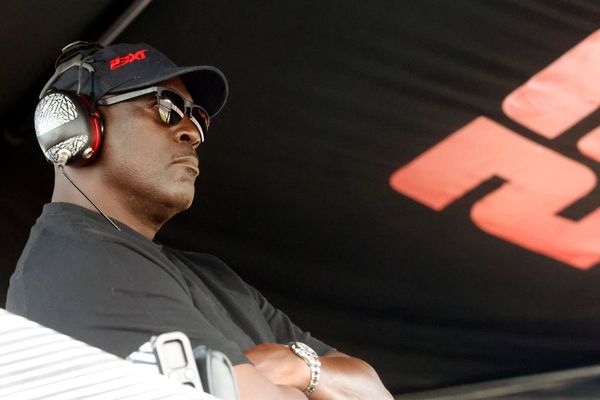
KEYS WEEK 2023: Jan Hammer might well be known to many as the film and TV score writer – and, yes, his score to Miami Vice is certainly a standout work – but he should also be credited with so much more when it comes to the history of keyboard playing and performance.
Hammer defined how the synthesizer became a lead instrument in jazz-rock, rock, funk and other styles of music. He single-handedly defined the technique and vocabulary of pitch-bending, and as a performer, he stood toe-to-toe with many of the greatest guitar players of our age. And, yes, he's a pretty successful score composer too!
Eastern European Roots
Jan is a native of Czechoslovakia, now known as the Czech Republic or Czechia. Coming from a musical family, he studied classical piano as a youth, until the jazz bug bit him in his teens. He immersed himself in that music, both on piano, organ and drums. An early recording called Maliny Maliny finds him playing very progressive jazz on the B3.
When Russia invaded his country in 1968 he fled to the United States, enrolling in the Berklee School Of Music and becoming a US citizen. He toured with jazz vocalist Sarah Vaughan as her pianist and musical director after leaving school,
and then settled in New York City to develop his career. There he met a lot of musicians who, like himself, were exploring Indian and Eastern European elements combined with the rhythmic power of rock, all with a highly improvisatory approach.
Hammer points to his work with Jeremy Steig as an example of these early creative efforts [check out Jeremy Steig's Energy album here]. He speaks of hearing the Tony Williams Lifetime band while in Boston as a huge influence, one that introduced him to the playing of John McLaughlin on guitar. The explorations of Miles Davis (who he jammed with), and then Jimi Hendrix became further catalysts for his progressive development.
Searching For Relentless Energy
Hammer was breaking away from the confines of bebop and post-bop playing, chasing what he defined as the relentless energy he found in artists like John Coltrane and Hendrix, and he also recognized in McLaughlin’s playing.
So when John asked him to jam and explore forming a new group he jumped at the chance, and the Mahavishnu Orchestra was soon formed. The group quickly rose to fame on the heels of their incendiary live performances. They soon found themselves touring as a rock band would, playing to large crowds and leaving audiences in disbelief, and roaring the loudest approval.
Jan was looking for a way to expand his sound, and break away from the restrictions of the keyboard. He wanted the freedom to slide notes around, bend pitches and have a sound that could stand up to the volume and tonal aggression of a guitar player. In the spring of 1972 he bought a Minimoog, and after locking himself away in his loft for a few weeks, he found his voice, and brought the instrument into his performances with the band.
There is no precedent for the approach and language Jan developed on the synth from previous synthesizer recordings. Eastern European vocal and stringed instrument music, and the language of blues and rock guitarists informed his use of pitch bend. His timbral choices were his own, and suited the highly rhythmic and aggressive way he attacked the complex music the band played.
Here is his first recorded use of the Minimoog, from the band’s second album Birds Of Fire.
You can see him tear it up on the synth in this live performance in August of 1972.
And this section of the tune Awakening from their live third album, Between Nothingness and Eternity (Bonus Disc), showcases Hammer playing along to a sequenced riff in a style that no one was doing at the time.
Setting The Standard
Jan became an in-demand player for the artists who were defining the jazz-rock movement, and was featured on many of the top recordings of that era. His intro on Billy Cobham’s Quadrant 4 from the album Spectrum is a classic example of how he developed his lines and his powerful style on the instrument.
Hammer played electric piano and synth on the tune Lopsy Lu from Stanley Clarke’s second album. Jeff Beck reached out to Jan to work with him on the follow-up to his hugely successful Blow By Blow album, and Hammer contributed two songs to that album, Wired, including the now-classic Blue Wind.
The two musicians found themselves kindred spirits and recorded and toured together many times. This live performance shows Hammer taking the dominant role onstage from Beck as a now-rocking front man, playing a strap-on keyboard commonly called a keytar. Beck and Hammer last reunited in 2016 to perform the tune Star Cycle, which Hammer wrote for Jeff’s 1980 album There and Back.
Plenty of artists enlisted Hammer’s signature playing, including Al DiMeola, Carlos Santana, Neal Schon, Tony Williams and others. He made many recordings under his own name, and with his own group: standouts include Oh Yeah, Melodies and the classic The First Seven Days.
Scoring Success
Jan began composing for film and TV in 1984. He was approached by director Michael Mann to get involved in a show about detectives fighting crime and the drug trade in Miami. Jan played him a piece he was working on using the Fairlight CMI to develop techniques for creating driving, pulsating grooves, and that became the theme for Miami Vice.
The show was an instant success, and Jan’s theme song ended up reaching number one on the Billboard Hot 100 Singles chart, was a top 5 international hit, and nabbed him two Grammys (Best Pop Instrumental Performance and Best Instrumental Composition). The show’s soundtrack album sold over four million in the U.S., reached quadruple-platinum sales, and is reported at over seven million unit sales worldwide to date. Jan has gathered much of the music he wrote for the show and released it as Miami Vice: The Complete Collection.
Jan has a huge CV of film and TV work that followed and also got involved early on in the world of computer animation, scoring the ground- breaking BEYOND The Mind’s Eye video album, a project that spent 112 weeks on the Billboard Top Music video charts, and was certified triple-platinum.
Hammer continued scoring; making albums and more throughout the end of the decade, and then his career went quiet. So it was a most welcome return when in 2006 Hammer scored the film Cocaine Cowboys and then made a rare live appearance at the Moogfest in NYC.
Jan finally returned to original music in 2018, releasing an album of musical sketches called Seasons Pt. 1. This was followed in 2020 by Sketches In Jazz, and again in 2022 with Seasons Pt. 2. All recorded by himself in his home studio, these releases span many musical styles and moods, and were welcomed by his legions of fans, and to critical acclaim.
Looking for more great keyboard gear and technique articles? Get all our reviews, news, features, tutorials, tips and more at our Keys Week 2023 hub page.







